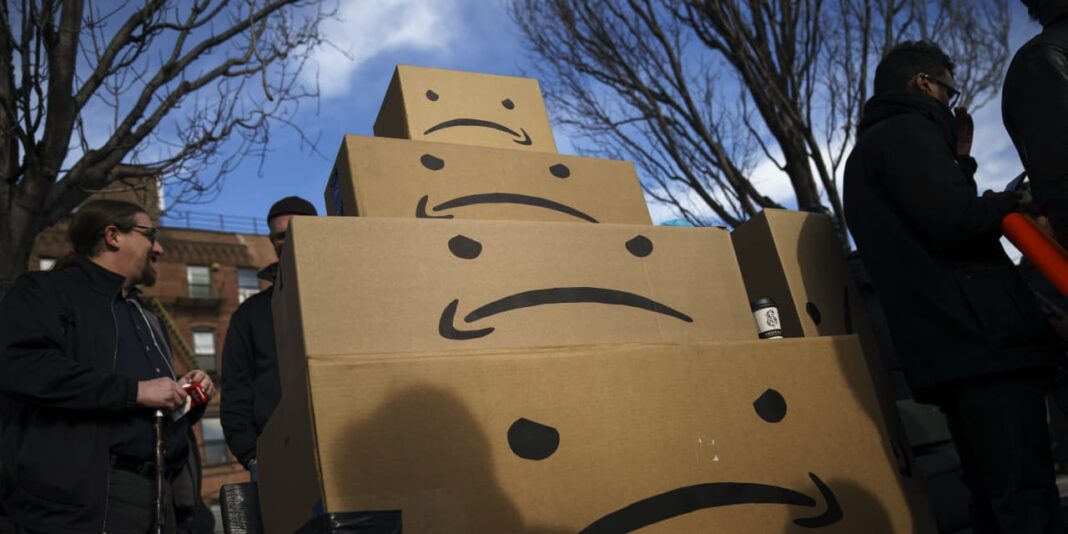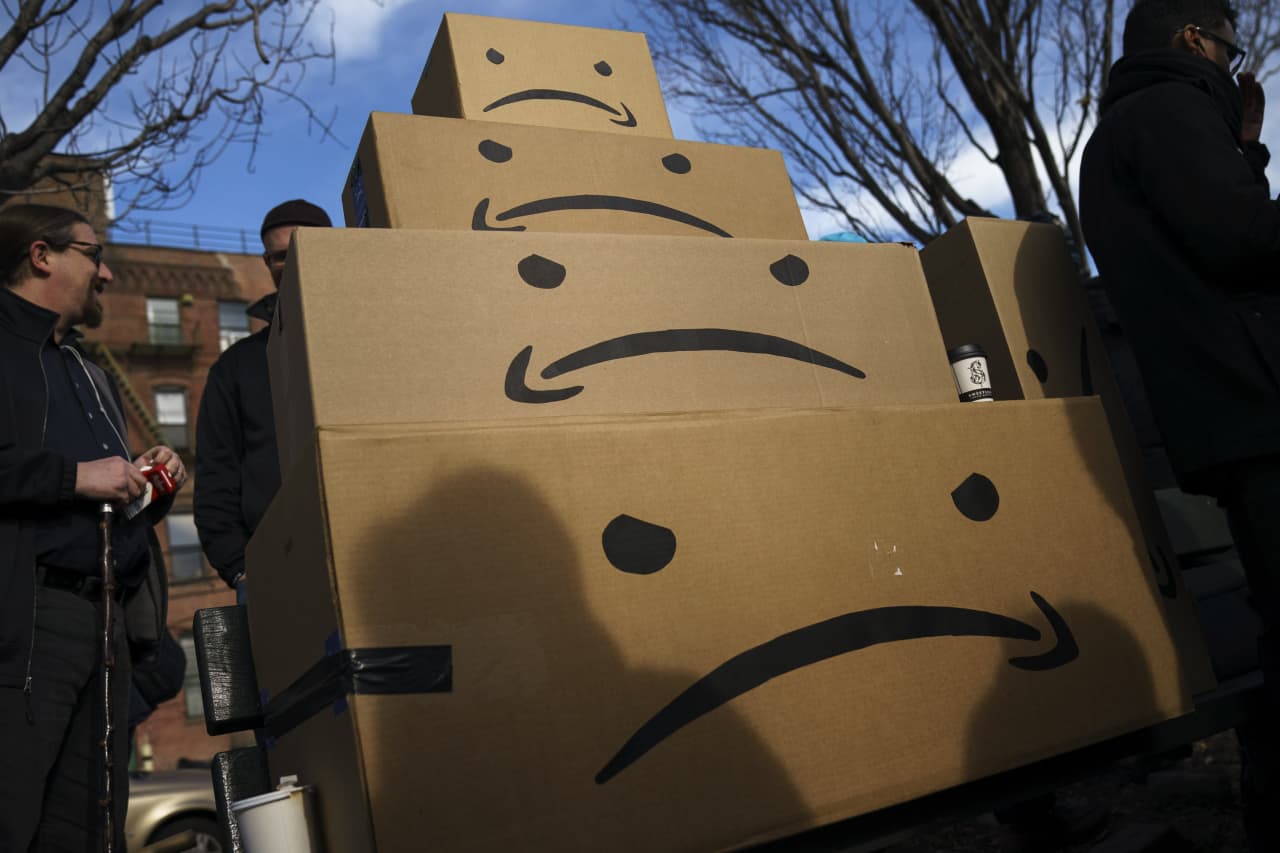A previous version of this column indicated Uber Technologies was joining the Dow Jones Industrial Average. Uber has been selected to enter the Dow Jones Transportation Average. The column has been corrected.
Amazon.com
AMZN,
and Uber Technologies
UBER,
shareholders would do well to pay attention to a stock-market pattern that doesn’t favor these two stocks.
Amazon is replacing Walgreens Boots Alliance
WBA,
in the Dow Jones Industrial Average
DJIA,
while Uber pulls into JetBlue Airways’
JBLU,
spot in the Dow Jones Transportation Average
DJT.
But plenty of market research shows that stocks deleted from an index often outperform the stocks that replace them.
Consider what happened the last time the Dow industrials’ composition changed, in August 2020, when Salesforce
CRM,
replaced Exxon Mobil
XOM,
Since then, Exxon Mobil’s stock has trounced Salesforce shares — producing an annualized return of 36.1%, according to FactSet data, versus 9.2% for Salesforce.
I wrote about this market pattern on the occasion of that August 2020 decision to remove Exxon Mobil, under the headline “Exxon’s getting booted from the Dow Jones Industrial Average may be a blessing in disguise.”
Deleted stocks don’t always outperform the stocks that replace them, but they do more often than not. A study conducted by Jeremy Siegel and Jeremy Schwartz of the University of Pennsylvania measured the performance of all stocks deleted from the S&P 500
SPX
between 1957 and 2003. They found that the deletions, on average, outperformed the replacements. A similar result was reached by another study, which focused on stocks added and deleted to the Russell 2000
RUT
between 1979 and 2004.
Contrarian analysis helps us to understand why this pattern exists. Stocks deleted from an index tend to be down on their luck, while the stocks chosen to replace them typically are riding high. As is so often the case, Wall Street goes too far — pushing losing stocks down further than is justified by fundamentals and pushing winning stocks up too much. A price correction is therefore to be expected.
A good illustration of this contrarian narrative was the contrast between Exxon Mobil and Salesforce in August 2020. Over the five years leading up to that decision, Exxon Mobil had lagged the S&P 500 by more than 20 annualized percentage points, while Salesforce had beaten the S&P 500 by more than 11 annualized percentage points.
A similar contrarian narrative applies to stocks added and deleted this month. Over the past five years JetBlue has trailed the S&P 500 by almost 32 annualized percentage points, and Walgreens Boots Alliance has lagged the index by more than 29 annualized percentage points.
In contrast, new Dow component Amazon has beaten the S&P 500 by almost two annualized percentage points over the past five years; new Dow transports entry Uber hasn’t been publicly traded for a full five years.
Post-announcement volatility
Some short-term volatility after index realignment is to be expected. But the impact of index-change announcements has been steadily declining, Robin Greenwood, a professor of finance and banking at the Harvard Business School, told me in an interview.
A November 2023 study he co-authored with Marco Sammon, also of Harvard Business School, documented a dramatic reduction in the post-announcement gains of stocks added to the S&P 500 and the post-announcement losses of deleted stocks. Similar results were found for stocks added and deleted to both the Russell 1000
RUI
and 2000
RUT
indexes, the Nasdaq 100
NDX,
and S&P midcap
MID
and small-cap
SML
indexes.
Though the Harvard professors didn’t focus on stocks added or deleted to the Dow, Greenwood told me that he suspects that the price impact of a change to that index — such as Amazon’s stepping in for Walgreens — will be smaller than for other indices. That’s because the Dow is a price-weighted index, which makes it an inferior benchmark.
The amount of money on Wall Street benchmarked to the Dow is only a small fraction of what is benchmarked to the S&P 500.
Mark Hulbert is a regular contributor to MarketWatch. His Hulbert Ratings tracks investment newsletters that pay a flat fee to be audited. He can be reached at mark@hulbertratings.com
Read on:
Nvidia is the ‘Magnificent One’ now — but these rivals are closing in

